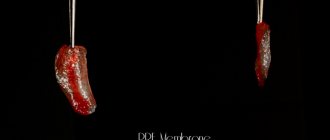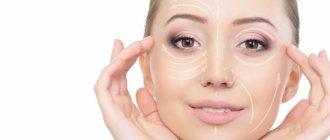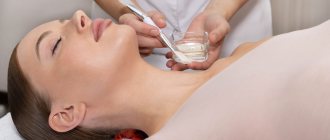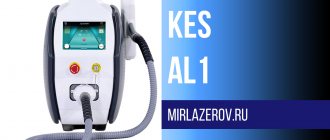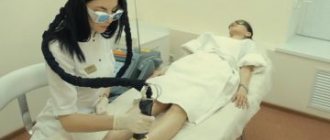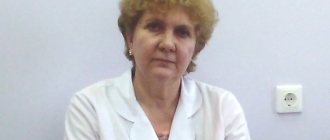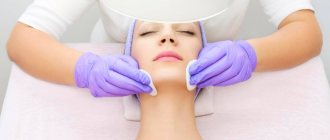The use of plasma technologies in cosmetology is a promising direction, but due to its novelty it is not yet entirely clear not only to the general public, but also to beauty market specialists.
Why is this technology used in the beauty industry, and what are its features? What unique and popular procedures can be performed using plasma energy devices?
Today, the capabilities of plasma are being actively studied, and the range of services using it is expanding. More and more cosmetologists are beginning to practice plasma blepharoplasty of the upper and lower eyelids (offering it as an alternative to surgical blepharoplasty). Using plasma devices, acne is treated, pigment is removed, and scar tissue is corrected. Before choosing a plasma device to use in your salon or clinic, you should first understand what plasma is and what types of plasma devices there are.
What is plasma?
Plasma is a gas consisting of neutral molecules and charged particles. Plasma is formed in an electrical discharge (arc, spark, smoldering and others); combustion and explosion processes also lead to its formation.
Typically, there are three main physical states of matter: solid, liquid and gaseous. Plasma (despite the fact that it is a gas) is sometimes called the fourth state of aggregation, since its distinctive feature is ionization (the presence of charged particles). Thus, any stable gas is a collection of neutrally charged atoms that interact very weakly with each other. Plasma differs from ordinary gas in that at least one electron is separated from the shell of its atoms.
The second important characteristic of plasma is called its quasineutrality: this means that in a certain volume of plasma the number of negatively charged particles and the number of positively charged particles will be the same (and the total charge of the plasma is zero).
What causes a gas to become a plasma? It is formed when a gas is exposed to a large amount of energy. There are two ways to obtain plasma: by exposure to high temperatures, that is, heating, or by creating an electromagnetic field.
Plasma can be high-temperature and low-temperature. High-temperature plasma (over 1,000,000 K) – high degree of ionization (almost completely ionized gas). The sun, lightning, and the northern lights are examples of plasma in nature. This is her classic version. Low-temperature plasma (below 1,000,000 K) - a low degree of ionization (up to 1%), it is obtained by exposing the gas to electric current: it accelerates the movement of electrons, which in turn are separated from the atoms, providing the gas with electrical conductivity.
Low-temperature plasma is used in gas-discharge light sources and gas lasers, for gas purification (air filters), sterilization of instruments, in plasma chemistry (for creating polymers, processing carbon-containing substances), medicine (“plasma knife”) and cosmetology.
Although in these areas all plasma used by default implies working with low energy levels, cosmetic plasma is also sometimes, in turn, conventionally divided into high-energy and low-energy.
High-energy plasma in cosmetic devices has an output energy of 4–5 joules and works due to the sublimation effect (in contrast to laser ablation): with the participation of an electrode or using a special nozzle, the plasma penetrates the skin to a certain depth and forms a crater with a carbonization zone surrounding it ( without further layers of thermal damage). This method is used to eliminate excess tissue, correct wrinkles, remove scars, stretch marks, and neoplasms.
Low-energy plasma used in cosmetic devices has a working energy of approximately 1 joule, so such plasma has a milder effect on the skin: it is used to carry out anti-inflammatory and antibacterial procedures, activate the transdermal delivery of useful substances to the skin (by increasing the permeability of its stratum corneum ), stimulate the production of collagen and elastin, etc.
The effect of using plasma will depend on several factors: type of plasma, its dose, flow rate, pressure, exposure time. The characteristics of the tissue being impacted also play an important role.
Plasmolifting: the essence of the method
Plasmolifting stimulates natural regeneration processes in problem tissues. This is achieved by injecting platelet-rich plasma into them. Platelets ensure blood clotting; this is their main function. However, scientists later discovered that platelets also have another function: they not only participate in the creation of blood clots (thrombi) that prevent bleeding, but also produce substances that promote the healing of damaged tissue. It is this property of platelets that allows one to obtain a therapeutic effect from the plasma lifting procedure.
Plasmolifting accelerates regeneration processes (restoration of lost tissue structure). After the plasma lifting procedure, the skin tightens, its hydration and elasticity increase.
Cosmetology Procedures involving plasma
Procedures using high-energy plasma:
- removal of excess volumes of skin (a particularly popular procedure today is blepharoplasty of the upper and lower eyelids: using plasma sublimation, excess skin area is “excised”, forming drooping eyelids and the formation of wrinkles due to excess skin tissue in this area; plasmolifting is carried out not only in blepharoplasty procedures, but and to eliminate excess skin volume on other areas of the face and body that require a “lift”, but it gives its maximum effect on the skin around the eyes);
- coagulation of vascular formations;
- correction of hyperpigmentation;
- removal of scars, scars, stretch marks;
- removal of warts and other benign formations;
- treatment of active acne and correction of post-acne;
- removal of tattoos, permanent makeup.
Procedures using low-energy plasma:
- skin disinfection and wound treatment;
- acceleration of tissue regeneration;
- increasing skin turgor and improving general properties;
- increasing skin permeability to active components; medicinal and cosmetic products.
World top product
Plasma treatments have been well studied and are very popular in Japan, the USA and Europe. Numerous clinical studies have been conducted confirming that plasma rejuvenation is a safe and effective treatment.
For example, in Japan, NEOGEN is widely used to treat acne, age-related changes, as well as to improve the quality and rejuvenation of skin.
Neogen (NEOGEN) is a unique technology of plasma exposure to the skin, which achieves a rejuvenation effect in quality comparable only to surgical intervention.
Advantages of working with plasma
As we see, almost all procedures that can be done today using plasma are performed using other types of cosmetology equipment or without it at all. What advantageous differences does this technique have?
When compared with laser ablation (correction of wrinkles, removal of scars and stretch marks, neoplasms), the advantage here is:
- skin rehabilitation time after the procedure (about half as long as, for example, with ablative laser technologies);
- guaranteed safe tightening of the eyelid skin (plasma blepharoplasty does not have such high risks when working with thin eyelid skin as, for example, some ablative lasers);
- uniform heating of tissues by plasma without an “explosion” in chromophores, since it does not require chromophores;
- plasma (high-energy) transforms the treated tissue microzones immediately into a gaseous state, bypassing the liquid state, and thus prevents the formation of weeping wounds and prevents the development of infections (in fact, this process is called sublimation);
- completely tolerable sensations during the procedures (as a rule, only local anesthesia is used);
- the cost of plasma procedures (as a rule, it is lower than similar laser procedures due to the lower cost of plasma devices).
So, with the help of plasma, it is possible to carry out many already known rejuvenating and corrective procedures with high efficiency, minimal damage to the skin, fairly short rehabilitation and at an affordable price. And plasma technologies today are the undoubted leader in non-surgical blepharoplasty.
Results before and after the NEOGEN procedure in the photo
Non-surgical blepharoplasty using the NEOCEN device. Before and 1.5 weeks after the procedure
Blepharoplasty using the NEOCEN device. Before and 3 months after the procedure
Non-surgical blepharoplasty using the NEOCEN device. Before and 2 months after the procedure
Correction of the area around the eyes using the NEOCEN device. Before and 2 months after the procedure
Correction of the area around the eyes using the NEOCEN device. Before and 1.5 weeks after the procedure
Correction of the neck area using the NEOCEN device. Before and 3 months after the procedure
Rejuvenation of the neck area using the NEOCEN device. Before and 1 month after the procedure
Plasma facial rejuvenation
Plasma facial rejuvenation using the NEOCEN device. Before and 10 weeks after the procedure
Plasma facial rejuvenation using the NEOCEN device. Before and 4 weeks after the procedure
Treatment of post-acne using the NEOCEN device. Before and after the procedure
Types of plasma equipment
Here we will highlight the types of cosmetic plasma devices according to the method of plasma formation.
Plasma is formed inside the nozzle (plasma jet)
The world’s first plasma device, Portrait® PSR, worked on this principle, which was first used in 2006 for the purpose of skin rejuvenation. Nitrogen was used as the plasma-forming gas. In the handle of the device, under the influence of an ultra-high-frequency electric current, nitrogen molecules were ionized, and at the output a beam of plasma penetrated the skin through millisecond pulses. Why was this particular gas used? Due to its inertness (nitrogen displaces oxygen from the surface of the skin, necessary for oxidation and combustion, thus preventing the risk of burns and scarring). Today, some of the devices available on the market operate on exactly the same principle: ready-made plasma in the form of a beam of a certain diameter acts on the skin.
In addition to nitrogen, other inert gases, such as argon, are also used. This method is considered non-contact, since the parts of the device do not interact directly with the skin. Such equipment allows today to carry out procedures for plasma skin resurfacing, wound treatment, and vascular coagulation. The epidermis layer is damaged during the procedure and gradually exfoliates (neoepithelialization occurs in 5–7 days), serving as protection for the lower layers of the skin until it is renewed. This reduces the risk of side effects (scars, depigmentation, infections). The dermal layer requires longer renewal, as its damaged structures are slowly destroyed and replaced with new collagen and elastin. Remodeling of the dermis lasts 3–4 months.
Larisa Arkadyevna Astrakhantseva, educational cosmetologist:
“Modern devices operating according to the described principle: “impact by a plasma jet” have the ability to operate with a beam of different diameters in both high- and low-energy modes. Depending on the program and the nozzle used, the operator can adjust the plasma flow density.”
Plasma is formed between the electrode and the skin surface (dielectric barrier discharge)
This method does not require the use of special gas in the equipment; here the role of ionized neutral gas is played by ordinary air (a mixture of atmospheric gases), which forms a natural layer between the surface of the skin and the nozzle. There is an electrode at the tip of the nozzle. When the doctor gives a pulse, a plasma arc is formed between the electrode and the skin, which penetrates the skin and forms a crater in it, evaporating the microzone without heating the surrounding tissue. This method is also non-contact (the doctor works at a distance of 0.5–1 mm from the skin). To carry out the procedure, disposable (or individual, used several times) needle tips are used.
This method of plasma formation can be used in different designs of plasma equipment and use different types of plasma, depending on the purpose of its use.
For example, a single electrode tip, called a surgical tip, uses high-energy plasma to sublimate tissue. It is used for procedures such as: blepharoplasty, correction of bags under the eyes, deep wrinkles, scars, stretch marks, pigmentation, skin lifting, acne treatment, removal of tattoos and tumors.
The “plasma shower” or “plasma jets” nozzle has many electrodes (for example, 20–25). This is a larger diameter nozzle for working with larger areas of skin. This attachment works with low-energy plasma and is intended for antibacterial treatment of the skin (for example, in the treatment of acne), improving its general properties (reducing hypersensitivity, stimulating the production of collagen and elastin), with its help activating the system of transdermal delivery of drugs and cosmetics to the skin
You can use this procedure as an independent procedure, or you can make it part of the protocol and use it to enhance the penetration of hyaluronic acid, peptides, vitamins, etc. into the skin.
Sometimes both attachments can be found in one plasma machine.
(It is known that there is also equipment in which the nozzle has many electrodes and which operates on high-energy plasma on the principle of sublimation, that is, it can treat a larger area at once (for example, carry out lifting by reducing a skin flap in the abdominal area). At the moment, Such equipment is not available on the Russian market.)
Plasma is formed in the air near an electrode with a curved surface (“corona discharge”)
In this device, plasma is also formed not in the handle of the device, but in the air, which here acts as a neutral gas, near an electrode with a strongly curved surface. Depending on the number of electrodes in the nozzle (there can be one or many), this method can be used as a “plasma knife” (for example, to remove tumors) or as fractional photothermolysis (for lifting procedures). This method of obtaining plasma is also used for bactericidal purposes.
Among other options for using plasma for skin rejuvenation, fractional microplasma RF technology is known. The tips of the manipulator of such a device are studded with many needle-shaped electrodes (spicules), and at the moment of approaching the surface of the skin (at a distance of several micrometers), a powerful electrical radio frequency discharge passes through the electrodes, which generates plasma flashes (many high-density microplasma discharges). This method is recommended for correcting age-related changes (wrinkles, sagging skin), scars, and even out skin tone. You can use it to work on the body in areas with a large area of skin, for example in the abdomen.
Contraindications
In cosmetology, it is strictly forbidden to use cold plasma for:
- presence of allergies to the compositions used for pain relief and skin disinfection;
- the presence of oncological formations;
- a pronounced inflammatory reaction or severe suppuration of the wound;
- the presence of diseases of the heart and blood vessels, as well as kidneys, liver and pulmonary systems;
- endocrine pathologies and epilepsy;
- exacerbation of chronic diseases;
- blood composition disorders (anemia, increased/decreased coagulability);
- the presence of colds or elevated body temperature;
- severely reduced immunity or its absence (HIV, frequent colds);
- childbearing, lactation and during menstruation.
If there is a piercing on the body, it should be removed for the duration of the session. If other procedures for the purpose of rejuvenation (fillers, peelings, laser cleaning) were performed within 3 weeks, then the procedure is also prohibited.
Important characteristics of a plasma machine
The parameters of plasma devices may vary, but we will list the most important ones that you need to pay attention to when choosing a device:
- ability to adjust pulse length (ms);
- ability to adjust power (0.8–5 J); (Expensive devices usually have several modes of pulse length and power level. It is these two indicators that form the diameter of the crater and its depth. The doctor sets them according to the goals of the procedure and can change them during work. In inexpensive devices, the ability to vary the parameters is usually very limited (otherwise and is completely absent).)
- some devices have a nozzle with a lock (this makes the doctor’s work easier and ensures equal depth of the craters);
- plasma stability (discharges must have the same selected power).
What is the difference between cold plasma and laser treatments and injections for rejuvenation?
Cold plasma in cosmetology has its pros and cons when comparing the effects of laser and injections:
| Distinctive points | Cold plasma procedures | Using laser | Using injections |
| How is the effect achieved? | Cold plasma heats predominantly the upper layers of the skin, activating cell regeneration and collagen formation naturally | The laser beam evaporates the upper layers of the epidermis by heating, as a result, the process of cell regeneration starts to create a new layer of skin, and collagen production is also activated | A special composition is injected under the skin, which can be therapeutic (the components included in the composition activate the renewal of epidermal cells and the formation of collagen) or serve as a filler (wrinkles are straightened as a result of filling the voids under the skin with the injected composition) |
| Painfulness of the procedure | Anesthesia is used extremely rarely; the patient often feels warmth | Requires the use of painkillers | The pain is low, but present. Anesthetic gels are used |
| Risk of infection | Absent | Minimal. Only when combing the crust or removing it yourself ahead of time | Possible infection from the needle under the skin |
| Appearance of the skin after the session | Slight redness of the treatment area may occur | Redness and swelling at the laser site, followed by a feeling of skin tightening due to crust formation | Pinpoint hematomas and hemorrhages remain at the injection site |
| Features of the rehabilitation period | The skin is restored within 5-7 days | Restoration of the epidermis up to 6 weeks (during this time, a new skin is formed and the crust from the old skin is torn off) | The skin recovers in 3-14 days. Depends on the composition used |
| Possible side effects | Develop extremely rarely | Pigmentation may appear, and if the skin is not taken care of correctly during the rehabilitation period, scars may form. | Suppuration of the puncture sites as a result of infection. Formation of lumps under the skin |
| Effectiveness of the method | High and persists for a long time (from a year) | High efficiency with preservation of youthful skin for up to a year | Injections can smooth out wrinkles (mostly shallow ones) for up to 8 months. The effect may be mild. |
| Distinctive features of the procedure | Has a disinfecting effect. Skin condition improves within 3-6 months after completion of the course | Cannot be used in the eye area | An allergic reaction to the composition may develop |
When choosing methods, contraindications must initially be taken into account, and only after that the choice of rejuvenation method is made.
